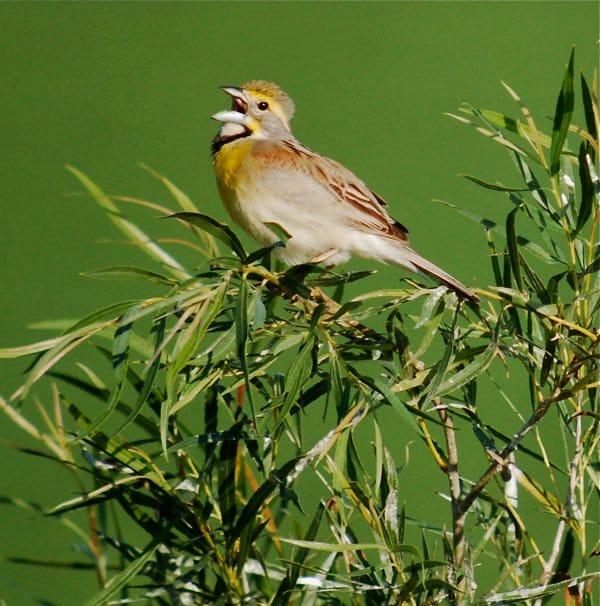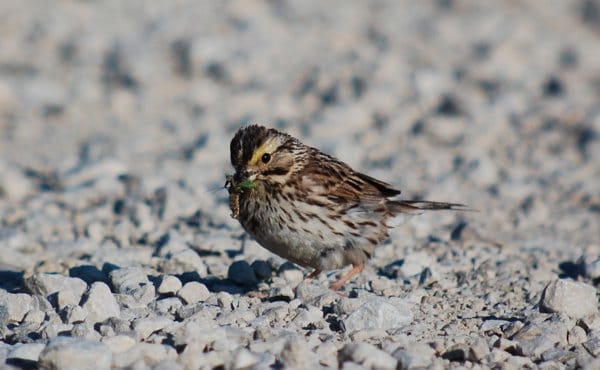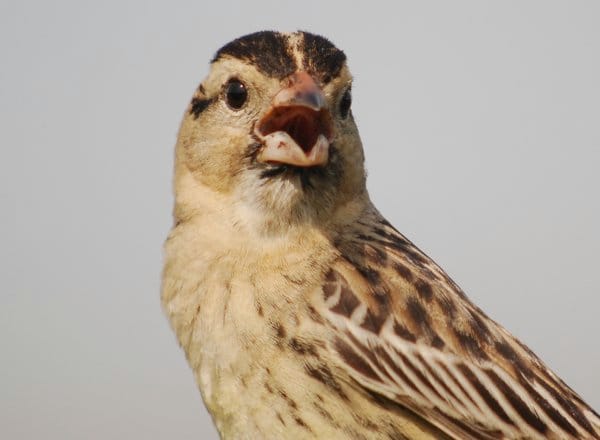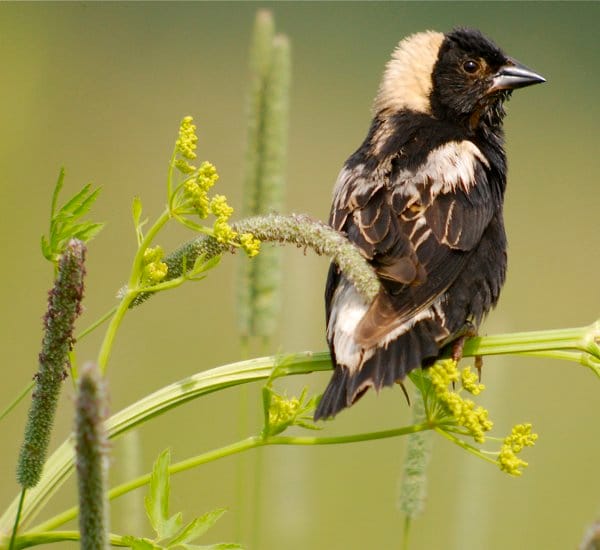One of the things I do to earn a living is bird surveys, some for the federal government, some for private companies that want to assess an area for construction (like a wind turbine). I absolutely hate the job when my alarm goes off at 4:30 am and every cell in my body is trying to force my finger to hit the snooze button, but when I’m out in the field, I love the work: beautiful mornings, a thermos of coffee and birds singing on territory.
There are different types of surveys, some easier than others, but one thing that I love is the opportunity to work a patch for a specific period of time and noting the changes that happen each week…and how all too quickly they happen. One big example of change this week was that as I was brushing my teeth at 4:35 am and it was the first time that a robin was not singing on territory outside my bathroom window, summer is on the downswing already.
I’m in the middle of a survey now that requires me to stay in one spot for four hours. There’s something very relaxing and calming sitting in one spot for four hours at a time and only focusing on birds, no email, no paperwork just birds. I’m only supposed to document one specific species, but I also note the other birds because in a 4 hour period, I’m lucky if I see the target species for 15 minutes. Savannah Sparrows are the most common and I do enjoy their territory song. Although one bird in particular keeps chipping angrily when I set up my chair, scope and thermos. Each week I say, “Really, dude, I’ve been here twice a week for the last 6 weeks and when have I ever once showed an interest in your nest? Go away and feed your babies.”
Above is a female Bobolink who yelled at me a couple of weeks ago. By the time I started my survey in this patch, she was feeding chicks. The next week, the bobolinks moved to a different field, some rebuilding. Their nesting cycle is so fast, the female builds a nest in about two days, incubate for 11 days and the chicks can run (not fly) from the nest at about 8 days if flushed. They usually leave the nest at about 10 to 11 days–regardless, that is some fast growing!
It’s a good strategy for Bobolinks to have. Cattle wandered this pasture along with me (one cow even attempted to taste my carbon fiber tripod). I can watch where I step on my way to my survey spot, the cattle aren’t so cautious, Bobolinks need to be ready to move when the unaware bovine wanders near near the nest.

Last year, I had a small fallow patch between two cornfields, barely five acres. Each week a new species tried to test the patch for nesting territory. The first week it was a Sedge Wren. The second week it was a male Bobolink. The third and fourth had a Dickcissel give it a go. Apart from some Red-winged Blackbirds, I don’t think any of the other species had a successful go at this territory, was the pesticides? Too little food? Not sure, but I do see that no bird can live in a corn field, that’s a fact repeating itself again and again when I’m surveying different areas.
Normally, when I’m birding for fun, I have a tendency to wander or take a particular trail. These surveys force me in to one spot can still garner me quite a few birds and the best part are the random surprises. Last week, a Merlin flew in, dove at some blackbird and kept going. Where did that Merlin come from and where did it end up. I’ve heard it said that if you sat in one spot long enough, every bird in North America could pass you by…I’m not sure about that, I find it hard to believe that a Greater Roadrunner will ever pass me by on my field surveys, but I do see the wisdom and the joy of sitting in one spot over and over.
So as you plan different birding trips, consider finding a place (that’s not a corn field) and plant your body down. See who shows up and what birds change from week to week. You don’t have to go crazy and do four hours at a time. I’ve had surveys put me in areas for 20 minutes at a time. Can you find a place to sit for 20 minutes a week and document every bird you see and hear?
















We did “roost disturbance monitoring for shorebirds” in Roebuck Bay a few years ago and that was 4 hours twice a month-2 hours before and 2 hours after high tide. It was interesting how relaxed the birds are after the tide turns and the different things that disturb them. We had to count the flock every 10 minutes and record any movement at all. Dolphins kept us amused in between birds! We do a weekly list for our garden as we have our first coffee each day-that’s more than 20 minutes! 🙂
What I find sad about these surveys is that you get to know an area very well, gain an appreciation of and emotional “attachement” to the birds and other creatures that live there, knowing that it will soon be “developed” = destroyed.
And sitting for four hours with a thermos of coffee? That’s a long sit without a chance for a “sit”… 😉
Last but not least, I guess it may well happen that all the bird species of North America will eventually pass one particular spot and if you sat there long enough, you’d see them all. But this requires a very, very long sit to experience a climate change that would e.g. drive Great Gray Owls to Texas or Lucifer Hummingbirds to Newfoundland… 🙂
Although I’m not doing a survey like you are, I have also found that sitting in one spot week after week is a lovely and relaxing way to bird. This summer, I’m working at an adventure camp for kids where groups come to me by a little stream where they catch frogs, salamanders, crayfish, helgrammites, toads and the resident wood tortoise. In between groups of kids, I get to sit by the stream and just enjoy the forest and the birds. I’ve enjoyed every minute of it so far.